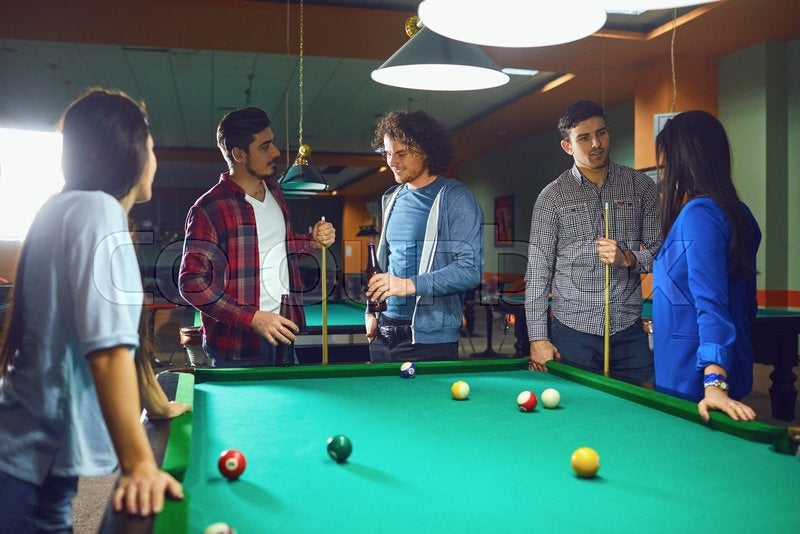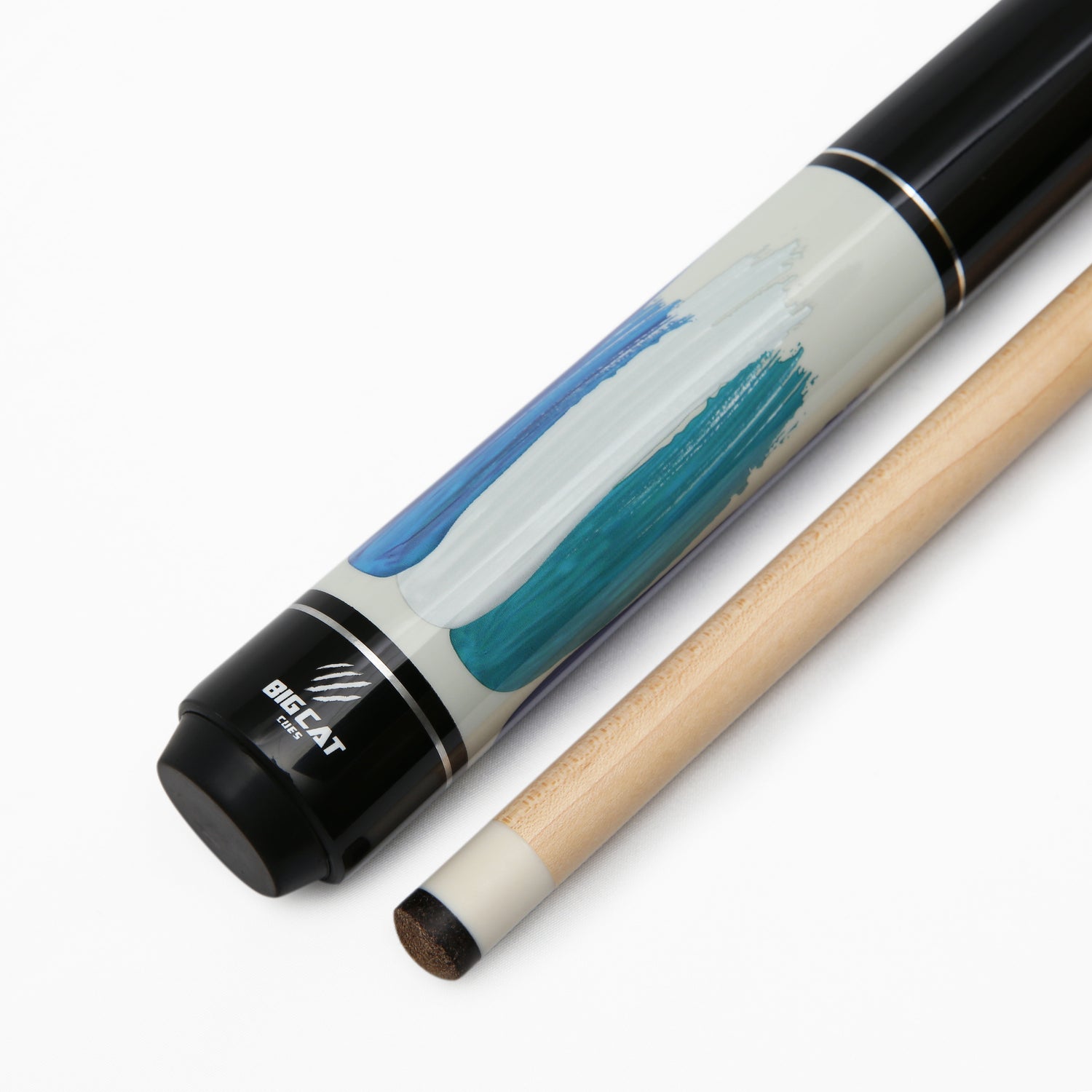
How to Straighten a Pool Cue? 4 Steps to Fix Your Warped Pool Cue
Facing a bent or warped cue shaft can be a daunting challenge for pool enthusiasts. The good news? It's entirely fixable. If you're seeking guidance on how to straighten a warped pool cue, Big Cat provides you with definitive steps to get your cue back in line. Dive in as we unravel the solutions for a straighter, better-performing pool cue.
How To Tell If a Pool Cue Is Straight
Before understanding how to straighten a pool stick, determining the straightness of your pool cue is really essential. An uneven cue can severely affect your gameplay. Here's a simple guide on how to tell if your pool cue is straight:
The Table Test
- Find a flat table surface, preferably a dining table.
- Place the pool cue horizontally on the table.
- Roll the cue back and forth with the tip facing you. Ensure to rollquick, as this will yield the most noticeable results, if not, you must replace the tip.
- Observe the movement of the cue. Does it wobble? Does the tip appear uneven or oscillate during its rotation? If you notice either of these signs, your cue may not be straight.

How to Straighten a Pool Cue?
The Floor Test:
- Stand the pool cue vertically on the floor with the tip facing downwards.
- If the cue has a severe warp, you might feel a bump or inconsistency between the butt and tip.
*Note: This method requires a keen eye. It might be tough to spot minor warps using this approach.
See more: How to hold a pool stick
Why Straighten Your Pool Cue?
Knowing how to straighten a pool cue shaft guarantees the game's precision and accuracy. Here are the reasons why a straightened pool cue is important:
- Consistency in Shots: A straight cue ensures that the force exerted on the cue ball is even and predictable. A warped cue can lead to inconsistent shots, challenging predicting ball movement and direction.
- Accuracy: An uneven cue affects the cue ball's trajectory, which can significantly throw off aim, causing missed shots or unintended ball placements.

Straighten pool cue will increase the accuracy. Image source: Quedos Billiard Texas
- Enhanced Player Confidence: Knowing your cue is straight and reliable boosts your confidence. A trustworthy tool empowers players to focus more on skill and strategy than compensating for equipment flaws.
- Prolonged Cue Life: Regularly checking and straightening your cue can prevent minor warps from becoming severe over time, and enhance its lifespan.
- Professional Standards: In professional pool games, equipment standards are stringent. A straight cue is not just a preference but a requirement for professional play.
>>> See more: How to make a pool cue
How to Straighten a Warped Pool Cue?
Dealing with a warped pool cue can be a real setback for players aiming for precision in their game. These are 4 steps on how to straighten a warped pool cue shaft to restore its original form and optimize your performance.
Properly Assess the Bend
Ensurthe surface you're testing the cue is flat. Traditional methods of rolling a stick on a table can be misleading, as tables might have wobble spots or the cue tip and ferrule might be misshapen, providing false indications. Instead:
- Hold the cue at its butt end and gently rest the tip on the floor.
- Adjust the cue at about a 60-degree angle to the ground.
- Slowly rotate the cue on its tip, watch closely for any curve. The part that curves up towards you is the bent portion.
- Position the cue under good lighting for better visualization and observe the shadow for bending signs.

How to hold the pool stick. Image source: Pearson Cues
Use the Gravity Method
Gravity can be your ally in straightening a bent cue shaft:
- Securely tie a string around the cue's top end.
- Hang the cue vertically from a ceiling, ensuring it's suspended freely.
- Allow the cue to hang undisturbed for several weeks. The cue's weight and the force of gravity can help rectify minor bends.
Manual Adjustment
For more immediate results:
- Position the cue at a 60-degree angle to the floor.
- Place your hand palm down directly over the identified bend.
- Press down firmly, use your hand to stabilize and guide the cue. Rotate and adjust until the cue is straight.
Know Your Limits
While manually straightening, be conscious of the cue's strength and resistance. Press and flex the shaft, but avoid excessive force, especially if unsure of its durability. If you need more clarification, it's recommended to practice on a less valuable cue or sturdy house cues before attempting to fix your primary stick.
How to Prevent Your Pool Cue from Bending?
After addressing the challenge of straightening a warped cue, keeping its condition stable is equally crucial. So, how to prevent your pool cue from bending? Check these tactics.
1. Opt for Non-Wooden Cues
Choosing a pool cue is extremely important. Wooden pool cues, while cost-effective, are more susceptible to warping, given their natural composition. Over time, temperature and moisture fluctuations can cause the wood to bend. Instead of wood, graphite or fiberglass are another considerable options.

Wooden Cues. Image source: Snooker Crazy
These materials are more resilient to environmental stresses, ensuring that your cue remains straighter for longer. Choosing a cue made from a more stable material reduces the need for frequent straightening.
2. Invest in a Quality Cue Case
A protective case is not just a stylish accessory but a functional tool. A quality case, whether hard or soft, provides your cue with padding and protection from external elements.
3. Mind Your Handling Between Shots
Your behavior during downtimes can inadvertently cause harm to your cue. Avoid habits such as banging the butt on the ground, leaning against walls, or putting excessive pressure on the cue. Such actions can exert undue stress, leading to bends and warps over time.
4. Regulate Temperature Exposure
Extreme temperatures can be detrimental to your cue. Excessive heat or cold can cause the cue materials, especially wood, to expand or contract, leading to warping.
To prevent this, store your cue in temperature-regulated environments, away from car trunks, basements, or garages. A controlled environment, like a spare room, is ideal.
5. Stay Away from Direct Heat Sources
Whether it's a radiator or a fireplace, direct heat can cause significant bending. Ensure your cue is stored away from such heat sources to maintain straightness.
6. Refrain from Sanding the Shaft
While sanding the tip may occasionally be necessary, avoid sanding the shaft or butt of the cue. Sanding can open the pores of wooden cues, weakening the structure.

Refrain from sanding the shaft. Image source: Sports Aspire
Even for non-wooden cues, sanding can compromise the integrity of the material, making it more susceptible to bending and warping. Always prioritize the structural integrity of your cue over aesthetics.
Frequently Asked Questions
What's Wrong With a Wrapped Cue?
A warped cue can hinder consistent and accurate shots in the pool, as the unevenness disrupts the predictable trajectory of the cue ball. Additionally, the compromised integrity of a warped cue affects a player's confidence, potentially impacting overall performance during a game.
What Other Methods Can You Try for Straightening Your Pool Cue?
To straighten your pool cue, position it at a 60-degree angle to the ground, press down with your palm directly on the bend until it reshapes, then rotate and repeat the process to ensure uniform straightness. This manual adjustment method quickly corrects minor bends in the cue shaft.
How Can A Pool Become Bent?
Every cue, regardless of cost, can warp if not properly maintained. The primary causes are fluctuations in temperature and lateral pressure.
In conclusion, understanding how to straighten a pool cue is really important for each pool player. Ensuring your cue remains straight boosts accuracy and enhances your overall playing experience. With the proper techniques and care, maintaining the integrity of your pool cue becomes a manageable task.


